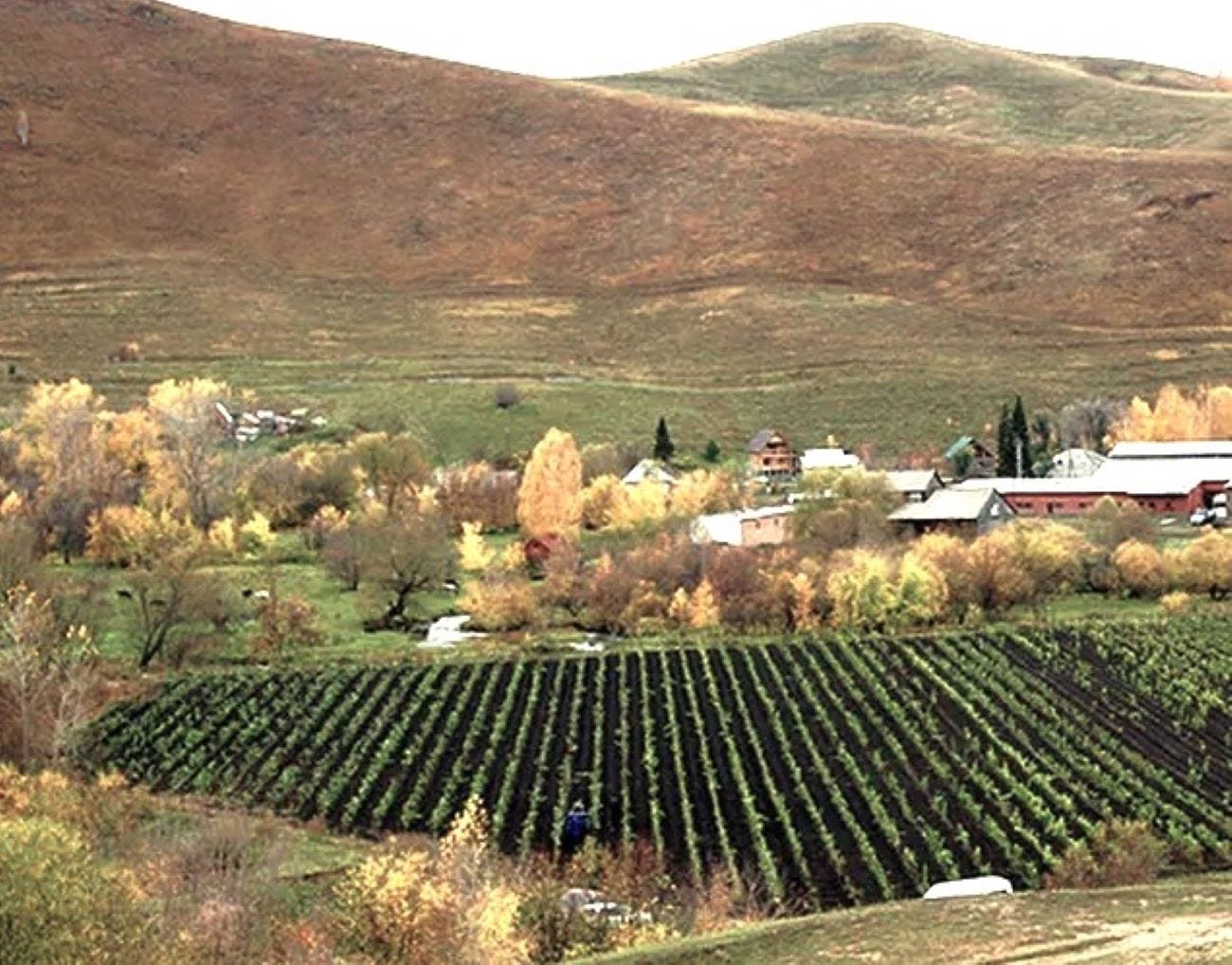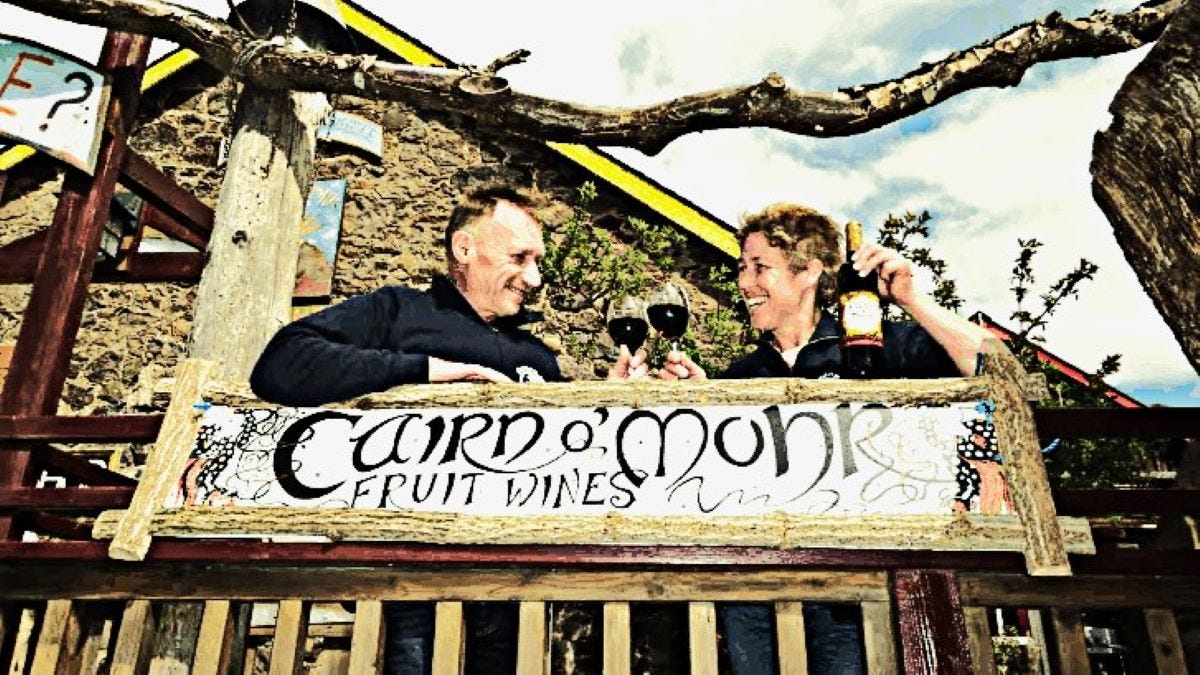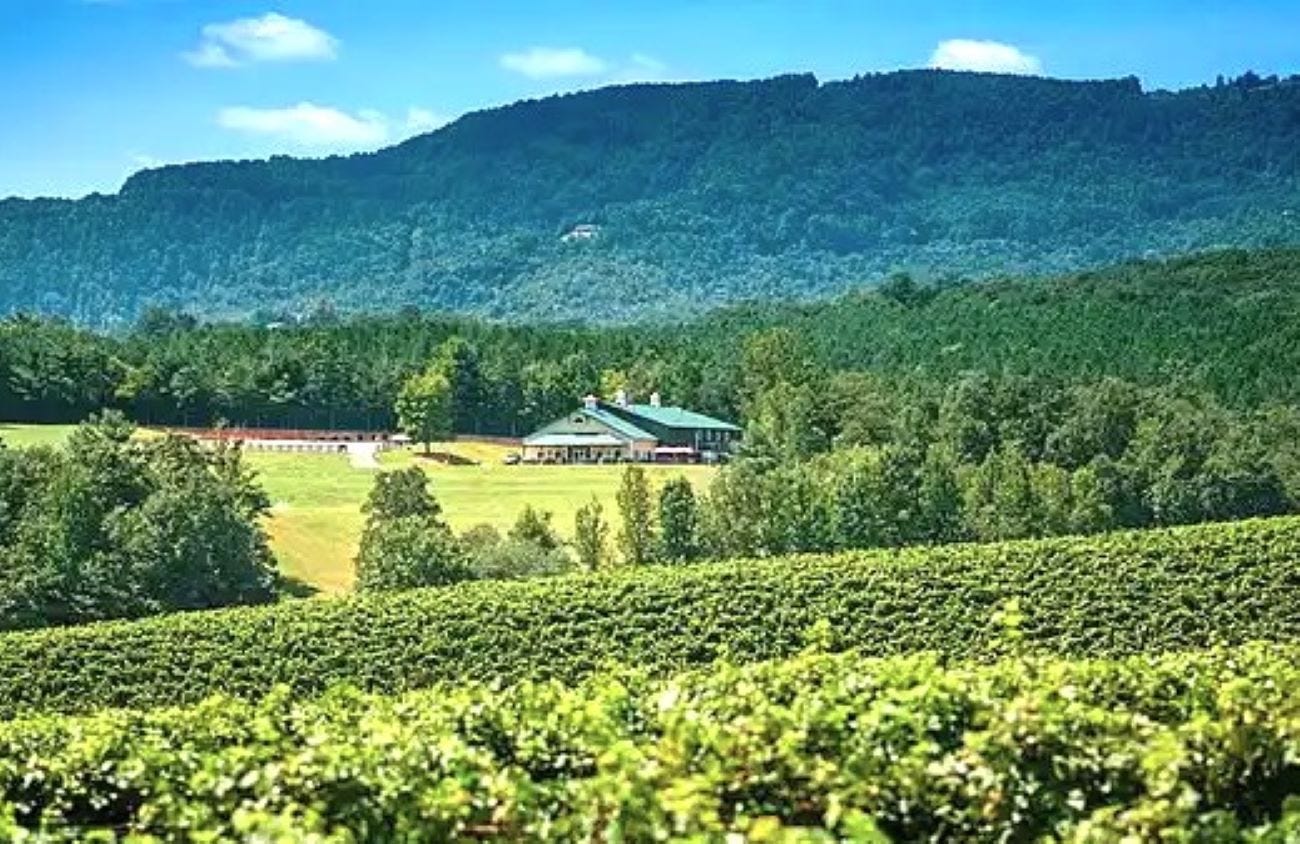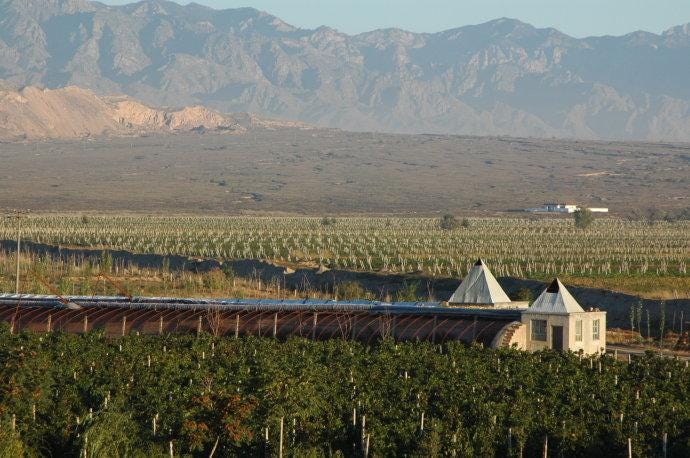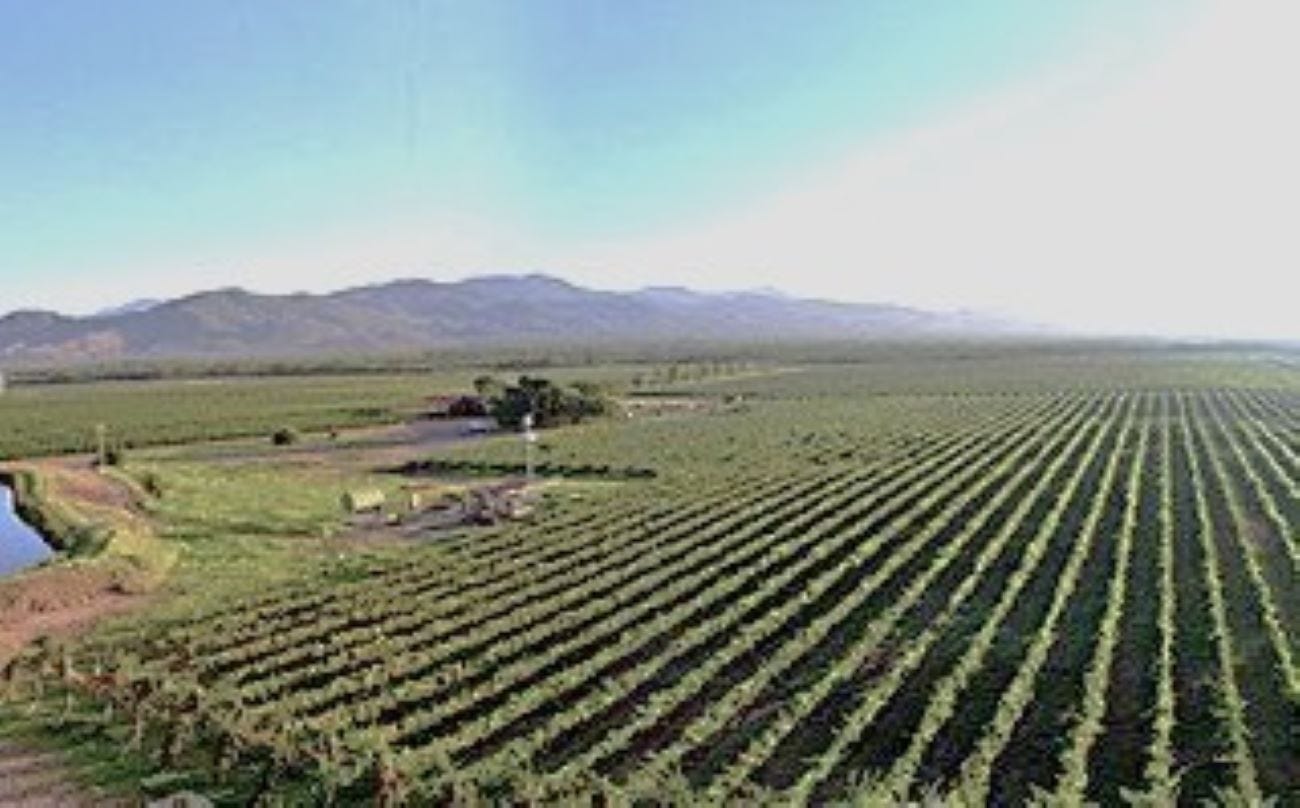7 Under the Radar Wine Regions
Oh no! Not another "7 wine regions to visit" article!
Yes, it’s yet another article about seven wine regions to visit before you die.
Just when you thought the Webternet couldn’t churn out any more of these listicles, here we are, scraping the bottom of the barrel to bring you yet another roundup of hidden vineyards and obscure sub-regions.
But hey, at least the Indelible Wine Stain knows what you’re thinking:
"Do we really need another list of off-the-beaten-path wine regions?"
Well, pour yourself a glass, because we’re diving headfirst into a cliché-fest with all the gusto of a soap opera twist at a family reunion, where everyone’s hiding secrets and someone baked is about to spill the beans, or in this case, spill some wine.
Let all of us “Stainers” toast to redundancy!
Numero Uno: The Altai Mountains, Siberia, Russia
The Altai region, once known primarily for its agricultural roots and natural beauty, is now carving out a new identity as a burgeoning wine region.
The Altai Mountains, often referred to as the “Golden Mountains,” are not just a natural paradise but also a hidden gem for winemaking. This remote and ecologically diverse region in southern Siberia offers a unique terroir for grape growing thanks to its diverse topography and microclimatic zones.
A major success here is the 'Altaiskaya Loza' winery, an ambitious project that marries tradition with innovation like a Siberian Bear performing the Ysyakh dance - unexpected, wild and yet somehow in perfect harmony with its roots.
This venture began under the leadership of Alexander Karlin, appointed governor of the Altai Territory in 2005, who aimed to diversif the region's agricultural profile, initially focusing on cheese production. The success of this project connected the region with France’s Franche-Comté, a region known for both cheese and wine.
After they cut it with the cheese, the natural next step was to explore winemaking in Altai, given that its unique microclimate is remarkably similar to that of the Black Sea coast, with 300 sunny days a year.
This new winemaking endeavor drew on the expertise of the Guillaume family from Jura, France. They hold a legacy dating back to 1895 and have been producing exceptional wines in Franche-Comté, particularly from Chardonnay, Pinot Noir, Savagnin and Poulsard grapes.
The operation is led by Xavier Guillaume who also brought their knowledge and experience to Siberia. They helped plant the first vineyards in Altai in 2009, choosing grape varieties best suited to the region’s conditions.
Many believe that the project has the potential to establish the Altai as a unique wine-producing area in Siberia. As the vines mature and the local winegrowing knowledge deepens, Altaiskaya Loza could become a symbol of cross-cultural innovation and resilience in the winemaking world.
In fact, with global warming on our minds, Siberia is tipped to be the future.
Time for a Number 2: Madagascar
Madagascar, known for its cartoon animals that love to “move it-move it,” also has a budding wine industry that likes to “prune it-prune it.”
Here we find a fascinating blend of history, innovation and resilience, set against the island’s unique and often challenging environment just like the movie Madagascar, starring Alex the Lion and Marty the Zebra. Ofcourse who could forget the crazy antics of King Julien the Lemur.
The roots of viticulture in Madagascar trace back to the 19th century when Jesuit missionaries introduced grapevines to the island. There were wines produced here and there over the next century, however it wasn’t until the French colonial period in the 1920’s that wine production began to grow.
The industry saw further development in the 1960’s and 1970’s, particularly with Swiss development aid projects that helped establish large co-operatives like Lazan’i Betsileo (founded 1971) which remains a key player today.
Switzerland has a long history of supporting such initiatives worldwide often focusing on regions that align with their expertise in mountainous terrain, cooperative systems and sustainable farming methods. Their assistance in Madagascar was part of this broader strategy to reduce poverty, help build self-sufficient and sustainable communities.
The Clos Malaza vineyard was taken over in 1987 by The Mac & Frères group, revitalizing an estate that was established by missionaries. They are located in the Fianarantsoa region, sitting at an altitude of 1,400 meters, with warm days and cool nights, which aid the development of grape flavor and aroma.
In an interview with Salina Aliyer, the Somali Sommelier and expert on Madagascan wine, she remarked:
“The terroir in Madagascar is as unique as it gets, think volcanic soils with a hint of tropical flair. It’s like the island itself decided to bottle its essence. We’ve got microclimates that play hard to get but when they cooperate, the wines like to move it, move it when they dance on the palate.”
We would like to disclose that she was paid to pun…we bought her integrity.
Madagascar terroir is particularly suited to hybrid grape varieties such as Petit Bouschet, Villard and Chambourcin. These are more resilient to the local pests and climate challenges than traditional European varieties.
Although Clos Malaza leans to hybrids another winery, Clos Nomena is vying for European varieties. Founded by Pâquerette and Jean Allimant and located in the central highlands near Fianarantsoa, Clos Nomena stands out because the winery has adopted modern winemaking techniques and imported equipment from France to ensure high-quality production.
Despite the small scale of the industry, Madagascar’s wine producers like Clos Malaza and Clos Nomena are steadily gaining recognition for their unique “Malagasy” character, making it a wine region to visit before you die.
Number 3: Scotland - Berry good Bramble bush wine
Scotland might be more famous for its kilt-wearing, bagpipe-playing, high and low-landering and everything-frying clansmen, but it also has a burgeoning wine industry, particularly in the realm of fruit wines.
One of the most notable wineries is Cairn o' Mohr in Perthshire who produce a variety of well-regarded wines using local fruits, flowers and leaves.
Tucked into a nook in the heart of Perthshire, they have been delighting locals and visitors alike with its unique fruit wines for over 30 years.
It was founded by Ron and Judith Gillies in 1987 and born out of a passion to produce something traditionally and authentically Scottish. The couple, inspired by traditional, national winemaking methods, began crafting wines that reflect the rich natural bounty of the region.
Over the years, the winery has become a beloved institution, known for its commitment to sustainability, creativity and high-quality craftsmanship. With each bottle capturing the essence of the Scottish terroir. Or “Scorroir.”
When visiting Cairn o’Mohr Winery, the nearest town to stay in is Perth, which is about a 20-minute drive away. This “Gateway to the Highlands,” offers a range of accommodations, from cozy B&B to modern hotel.
Perth is the home to the historically important, Scone Palace. Not to be confused with Scone World, the abandoned scone themed amusement park.
Number 4 on Zee list: Yadkin Valley, North Carolina, USA
In the Blue Ridge Mountains of Carolina, on the trail of the lonesome pine… sits Yadkin Valley. An unexpected gem in American winemaking known for both sweet Muscadine and traditional European grape varieties.
It stands as North Carolina’s premier wine region and in 2003, it became the state’s first American Viticultural Area (AVA), recognizing its unique terroir.
The area’s climate combined with well-drained soils provides ideal conditions for growing a variety of grapes, particularly European varietals like Cabernet Sauvignon, Chardonnay and Merlot.
At the forefront of the Yadkin Valley wine scene is Childress Vineyards, where NASCAR legend Richard Childress has shifted gears from the racetrack to the grapevine. Located in Lexington, Childress Vineyards has become the pole position in the region, producing award-winning wines that lap the competition from its 72 acres of vineyards. They’ve got a full throttle range of varietals, all reflecting the distinct characteristics of the Yadkin Valley AVA.
Childress Vineyards is not just a pit stop; it’s the finish line for wine lovers - featuring a Tuscan-inspired tasting room, fine dining that takes your taste buds on a victory lap, and scenic views of the vineyards that are sure to rev your engines. Visitors can enjoy tours, tastings, and special events, all while experiencing the rich winemaking that is putting “the YV” in the fast lane.
When visiting, nearby Lexington is an L-excelling-lent place to stay. It is the Barbecue Capital of the World, offering a charming small-town atmosphere with a variety of board, BBQ and local BBQ themed attractions. The close proximity to Childress Vineyards and other wineries in the region makes it ideal for exploring the rich BBQ flavors and scenic beauty of Yadkin Valley.
Number 5 is Alive: Ningxia, China
In the remote vastness of the north, in the dry and arid climate, sitting at high altitude, sits the “Grape Wall” of China.
Often referred to as the “Bordeaux of China,” Ningxia is rapidly gaining a reputation for high-quality wines and are garnering international acclaim.
Among the top wineries, “Helan Qingxue Vineyard” stands out.
Their “Jia Bei Lan” wine, a Cabernet blend, won the Decanter World Wine Award in 2011, marking a turning point for Chinese wines, putting Ningxia on the worldwide wine map, internationally and globally.
For those visiting, Ningxia offers more than just wine. The region is home to the Helan Mountains, which provide a stunning backdrop for the vineyards.
Number 6: Pyongyang, North Korea
For the truly intrepid oenophile, North Korea offers an exclusive wine experience like no other. While the country's wine industry is small and shrouded in mystery, it provides a unique and unforgettable (as well as likely unrepeatable) adventure. Be prepared for a very controlled experience under the watchful eyes of the regime.
The Taedonggang Winery, named after the river that flows through the capital, is one of the prominent producers. Established as part of the regime’s push for self-sufficiency, the winery produces wines from indigenous grape varieties, although any further details are not available. The grape varieties are believed to include or not include hardy hybrids capable of thriving in North Korea’s unique climate.
The winery is state-owned, reflecting the centralized control typical of North Korea’s economy. Production is focused on creating wines that align with local propaganda taste, which can range from grape to ginseng wine. The winery, like much in North Korea, serves as a symbol of the country’s ambition to showcase its self-reliance, even in the field of winemaking.
Venerable leader, Kim Jong-un, holds the titles of owner, winemaker and vine grower at the state-run Taedonggang Winery. He oversees every aspect of production, from handpicking the world’s finest grapes to personally sampling and approving each batch. The wines are said to be locally as the finest in the world, although any further details are not available.
Visiting Pyongyang’s wineries offers a unique glimpse into North Korea’s tightly curated experiences. Tastings may include wines that surprise even seasoned connoisseurs, though typically reserved for state functions and the elite. Like everything in North Korea, tastings are meticulously managed so that the narrative of national pride and self-sufficiency is maintained.
For those brave enough to embark on this journey, the Yanggakdo International Hotel offers a surreal blend of isolation and opulence with the added intrigue of a revolving restaurant where you can ponder the unique flavors of North Korean wine, all under the watchful eye of your guides.
Number 7, Last but not least: Bodegas Pomar, Venezuela
Despite being better known for its rum, Venezuela has a budding wine scene with Bodegas Pomar leading the charge. This vineyard utilizes the region's unique climate to produce wines that are starting to gain recognition.
Venezuela’s winemaking history is also quite unique as the country’s tropical climate is not traditionally associated with viticulture.
However, in the 1980s, Bodegas Pomar, a pioneer in the industry, recognized the potential of certain high-altitude regions in the western part of the country, particularly in Lara state. Pomar is a joint venture between Empresas Polar (Venezuela’s largest private company) and French Champagne, Martell.
By carefully selecting European grape varieties such as Syrah, Tempranillo, and Chardonnay and suiting them to the local conditions and adopting innovative techniques, they successfully established a wine industry.
The winery has played a crucial role in developing the country’s wine culture, producing a range of wines from sparkling to still varieties. Their flagship wine, “Pomar Brut,” has garnered recognition both locally and internationally.
While Bodegas Pomar offers tours, tourists should be mindful of Venezuela’s ongoing economic and political challenges, which can affect travel safety. Visitors are advised to stay in reputable accommodations in cities like Barquisimeto, near the winery. Currently, there are very few other wineries in the country, making Pomar a standout destination for wine enthusiasts.
Despite the challenges, Bodegas Pomar is yet another example of a producer that exemplifies how innovation and determination can create a thriving wine industry in unexpected places. For those willing to explore, it offers a unique and flavorful experience in the heart of Venezuela.
These seven off-the-beaten-path wine regions are not just a journey for your taste buds, but a true test of your travel mettle.
Whether you're dodging dastardly dictators, navigating North Korean nuances, or uncorking various Venezuelan vintages, each destination revolves around a wine experience like no other. After all, every sip could spark a revolution of its own.
So, pack your bags, grab a corkscrew (be prepared to lose it at airport security) and prepare for a trip that will leave you tipsily tangled in tales you’ll be telling ‘til time turns tide. This terrific tour of tantalizing terroir treats and tastes is truly a triumph for travelers thirsty for thrilling tidbits.
Time to toast to this top-tier trek, where the tantalizing truth of tucked-away terrain turns tipplers into triumphant taletellers.



